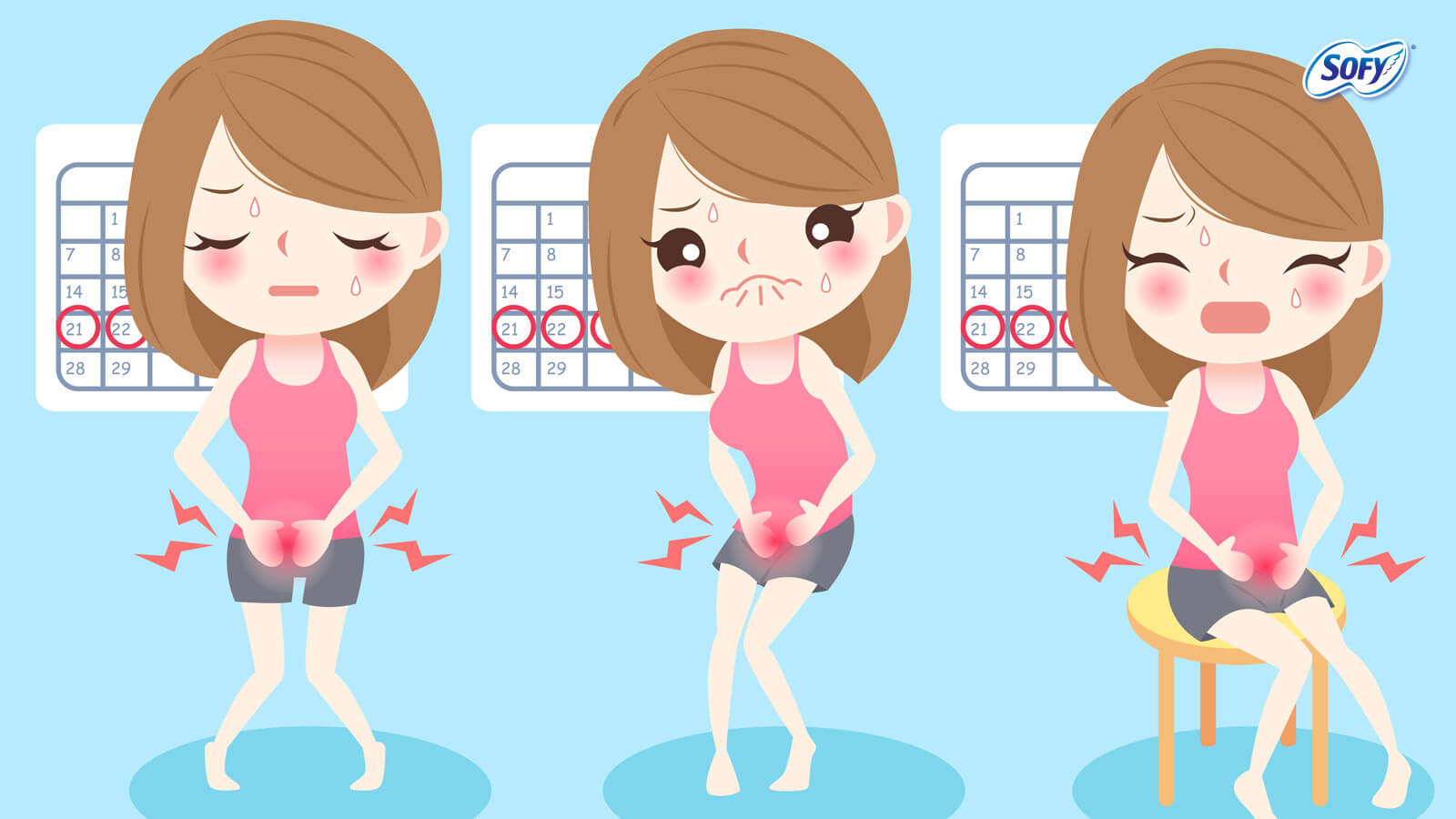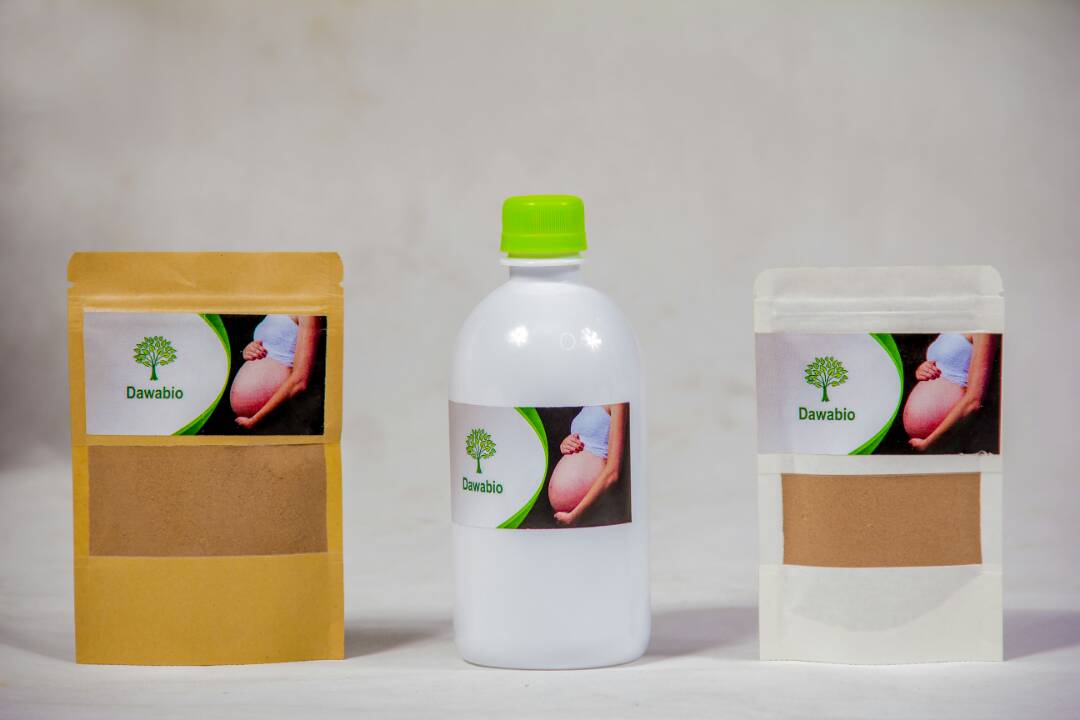- Home
- Blog
Blog

CAUSES OF VERGE ADENOCARCINOMA: NATURAL TREATMENT
On 26/12/2019
CAUSES ADENOCARCINOMA THE VERGE: NATURAL TREATMENT
The adenocarcinoma verge or penile cancer is a disease in which malignant (cancer) cells form in the tissues of the penis.
Adenocarcinoma of the penis or cancer of the penis is usually found on the glans or foreskin of the penis, but can also occur on the shaft of the penis. Almost all penile cancers start in the skin of the penis.
The cancer of the penis or the penis is rare cancer in France.
But before going any further in our writing, and in case you are concerned by this condition and want to avoid surgery at all costs, the health experts at DAWABIO after much research offer you a very effective solution based on herbal remedies for adenocarcinoma of the penis or cancer of the penis. Click on the image below to discover this natural treatment.
We deliver all over the world.
For more information, you can contact our experts on +229 51374202 direct line or by WhatsApp at the same number.
Different types of cancer
Penile cancer can develop at the expense of the skin or the internal tissues of the penis: it is called squamous cell carcinoma.
More rarely, it can be low cell carcinoma, melanoma.
Causes of adenocarcinoma of the penis
Certain factors predispose to the development of penile cancer or adenocarcinoma of the penis :
The lack of hygiene, aggravated by the existence of phimosis (affection of the penis) preventing any removal of coring, increases the risk of penile cancer. "Indeed, microbial development can lead to inflammation involved in the development of cancer, explains Dr. Ludovic Ferretti, member of the committee of andrology and sexual medicine of the French Association of Urology. Thus, we recommend a classic cleaning to water and soap after scalping (without forcing), then drying. And after urinating, wipe the glans well so as not to let acid urine infiltrate under the foreskin, which would promote inflammation.
· Phimosis (phimosis corresponds to a narrowing of the tip of the foreskin which prevents pull the foreskin);
· Dermatological disease of the glans or the foreskin which can become secondarily cancerous, like a mole for example;
The causes and risk factors of developing penile cancer include the infection with the human papillomavirus ( HPV )
The use of regular hygiene care, with systematic removal of the cores, remains the best prevention.
The dupenis cancer or carcinoma of the penis is a disease in which malignant (cancer) cells form in the tissues of the penis.
The penis is a rod-shaped male reproductive organ that transmits semen and urine from the body. It contains two types of erectile tissue (spongy tissue with blood vessels that fill with blood to make an erection):
Corpora cavernosa: The two columns of erectile tissue that make up most of the penis.
Corpus spongiosum: The single column of erectile tissue that forms a small part of the penis. The spongy body surrounds the urethra (the tube through which urine and sperm pass from the body).
Erectile tissue is wrapped in connective tissue and covered with skin. The glans (head of the penis) is covered with loose skin called the foreskin.
Infection with human papillomavirus can increase the risk of developing penile cancer.
Anything that increases your chances of getting a disease is called a risk factor. Having a risk factor doesn't mean you'll get cancer; not having risk factors doesn't mean you won't get cancer. Talk to your doctor if you think you are at risk. The risk factors for penile cancer or adenocarcinoma of the penis are as follows:
Circumcision can help prevent infection with the human papillomavirus ( HPV ). A circumcision is an operation in which the doctor removes part or all of the foreskin from the penis. Many boys are circumcised soon after birth. Men who were not circumcised at birth may have a higher risk of developing penile cancer.
The other risk factors for penile cancer are:
Be 60 years of age or older.
Have phimosis (a condition in which the foreskin of the penis cannot be pulled over the glans).
Have poor personal hygiene.
Having many sexual partners.
Use of tobacco products.
Symptoms
Changes in the skin of the penis are the most common symptom of penile cancer. They can appear on the foreskin of uncircumcised men, or on the tip of the penis (the glans) or the shaft.
Warning signs of the disease may include:
- Changes in skin thickness or color on the penis
- A bump on it
- A rash or small “crusty” bumps on it; it may look like an unhealed scab.
- Growths on the penis that appear bluish-brown
- A smelly discharge under the foreskin
- A sore on the penis, which may bleed
- Swelling at the tip of the penis
- Lumps under the skin in the groin area
Most men with these symptoms do not have penile cancer. Rather, it is an infection or an allergic reaction. Nonetheless, it's important to check for any unusual symptoms on or near your penis immediately. Early treatment is preferable.
Men at risk
There is convincing evidence that there are certain factors that increase the risk of penile cancer. Among them :
Chronic inflammation of the penis due to poor genital hygiene;
Human papillomavirus ( HPV ) infection ;
A narrowing of the foreskin, also called phimosis: this condition prevents the foreskin from retracting to reveal the glans, which makes genital hygiene more difficult and may mask a skin lesion;
· Smoking;
Precancerous lesions such as Queyrat erythroplakia or Bowen's disease.
Signs of penile cancer include sores, discharge, and bleeding.
These signs and others can be caused by penile cancer or adenocarcinoma of the penis or by other conditions. Check with your doctor if you have any of the following:
Redness, irritation or sore on the penis.
A lump on the penis.
Penile cancer and circumcision
In contrast, a circumcision performed in childhood provides some protection against cancer of the penis. HPV vaccination can also decrease the risk of developing the disease.
Usually, follow-up visits are first semiannual and then decrease in frequency over time. The duration of follow-up is in all cases a minimum of 5 years because 90% of recurrences are in the first 5 years, 75% of which are in the first 2 years.
We deliver all over the world.
For more information, you can contact our experts on +229 51374202 direct line or by WhatsApp at the same number.

OLIGOSPERMIA NATURAL TREATMENT
On 26/12/2019
OLIGOSPERMIA NATURAL TREATMENT
Treatment for oligospermia will depend on the cause that is causing the decrease in sperm in the ejaculate. However, most of the time, the etiology of oligospermia is unknown and, therefore, it is difficult to apply the specific treatment.
There are natural treatments to improve male fertility. Dawasanté experts provide you with a natural treatment based on medicinal plants to improve the quality and quantity of sperm. Click on the image below to discover this natural treatment.
We deliver all over the world.
For more information, you can contact our experts on +229 51374202 direct line or by WhatsApp at the same number.
Natural Treatment
Some men experience timely oligospermia due to a period of stress, a feverish process, or situations outside of their usual daily life. In these cases, it is possible to recover the adequate number of sperm after this unusual period has passed and by following certain recommendations such as the following:
- Resume healthy habits
- Eat a balanced diet
- Practice sport constantly
- Avoid alcohol, tobacco or other drug abuse
- Don't take anabolic hormones
- Avoid exposure to environmental toxins or at work
On the other hand, there are natural herbs that have been traditionally used as a home remedy to improve seminal quality, although homeopathy is not scientifically proven to increase the amount of semen.
Some of these natural remedies are infusions of damiana or terrestrial Tribulus, Korean ginseng in capsules, or Peruvian maca root powder.
The Andean maca is a spinal typical of Peru and is taken in combination with other herbs in teas or capsules. It contains high levels of potassium which promotes cellular exchanges and improves the transmission of nerve impulses.
Maca is beneficial because it lowers the level of oxidative stress and also contains folic acid (vitamin B6) which works against aging sperm.
Medical Treatment
Other treatment options for curing oligospermia are drugs based on vitamin complexes or hormonal doses. Likewise, its reliability is not proven although sometimes they help to recover sperm production.
- Vitamin complexes there are pills made with vitamin E, C, and/or B6 that contain a large number of antioxidants, which protect the DNA of the sperm from fragmentation. One of these marketed drugs is Androferti.
- Hormonal supplements for patients with testosterone deficiency problems or shifts of other hormones involved in male fertility. They help stabilize hormone levels and allow the testes to synthesize sperm in a normal way, which can be the solution for some types of oligospermia.
- Clomiphene citrate
- This drug is more used in women with ovulatory problems. However, it is also effective in men with hypogonadism to stimulate testicular function.
-
Surgical Treatment
In order to perform surgery on male and reverse oligozoospermia, it is necessary to know the specific reason that causes it, such as obstruction.
Oligospermia that can be treated with an operation is due to a testicular or post-testicular cause such as:
- the varicocele The cryptorchidism at age 2 years the hydrocele cyst testicular causing obstruction in a seminal Cut Canal
-
These are the most favorable cases to be able to increase the number of sperm in the ejaculate and have children naturally.
Assisted reproduction, like any medical treatment, requires trusting the professionalism of the doctors and the clinic of your choice because obviously, not everyone is the same.
This " tool " will send you a fully personalized report, with detailed information about the treatment you need, clinics in your area that meet our quality criteria and your budgets. In addition, it includes tips that will be very useful during the first visits to the clinics.
What tips are there for increasing sperm count?
It is true that doctors can give some recommendations to try to increase the quantity and quality of semen, but this is not miraculous, as there may be anatomical or endocrine problems in which men cannot produce sperm. sperm. Here are some healthy guidelines that all men with oligozoospermia should follow:
- Avoid alcohol, tobacco and drugs. Regular exercise improves blood circulation, increases blood flow to the testes, and promotes sperm synthesis. Eating a healthy and balanced diet, with natural antioxidants found in fruits and vegetables, will improve sperm survival and mobility and prevent oxidation. Perform relaxation techniques such as meditation or yoga to reduce stress as this reduces the vitality of semen and makes it difficult to erect. Avoid saunas, hot baths, tight clothing, computer on the legs, etc., as these habits increase scrotal temperature and prevent sperm formation.
-
What is the best treatment for severe oligospermia?
In all types of oligospermia, both mild and severe, treatment depends on the cause of the decreased sperm concentration. If it is not possible to find out and the oligospermia is severe, it is most likely necessary to resort to IVF to achieve pregnancy.
-
Does acupuncture help cure oligospermia?
Some research claims that acupuncture may be beneficial for treating infertility in men with low sperm counts, especially in cases of idiopathic oligospermia where the cause is not known.
Is there a natural treatment for oligospermia?
There are natural remedies such as damiana and terrestrial tribulus for herbal teas, Korean ginseng in capsules, or Peruvian maca root powder. Some experts also claim that acupuncture can help restore sperm function. However, the most recommended as a natural treatment is to follow a healthy lifestyle, eat a balanced diet and quit harmful habits such as tobacco and alcohol.
Is it true that olive oil can improve semen?
Olive oil is monounsaturated fat (HDL) rich in oleic acid which, in abundant quantities, promotes the destruction and elimination of "bad" cholesterol (LDL) from the bloodstream, which helps reduce the risk. cardiovascular and / or brain disease.
At the reproductive level, the regular consumption of olive oil (if it is a better virgin) and the elimination of LDL cholesterol promote the arrival of oxygen in the testes and, consequently, spermatogenesis can be performed under optimal conditions.
You can find more information about it here: Olive oil to treat male infertility.
We deliver all over the world.
For more information, you can contact our experts on +229 51374202 direct line or by WhatsApp at the same number.
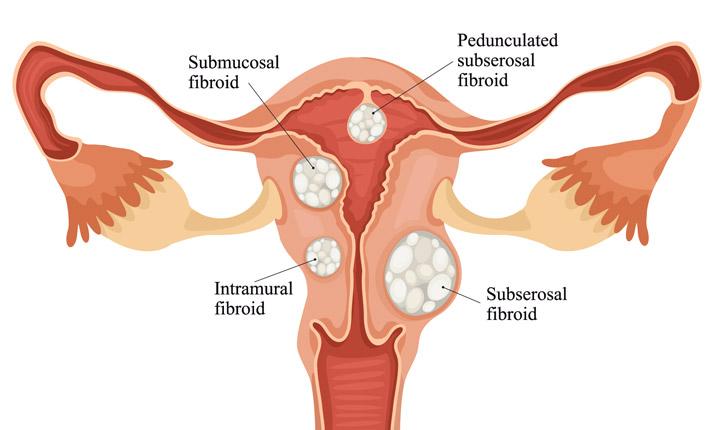
7 natural remedies to get rid of cysts and fibroids in an easy way
On 26/12/2019
|
Many women are most often faced with serious situations of fibroids and uterine cysts, especially during the pregnancy years. Usually, these conditions do not cause discomfort, although, for some women, hormonal fluctuations can cause pain and swelling. The fibroids, also called myomas, are benign non-cancerous tumors that grow on the uterine wall. The ovarian cysts, including polycystic ovary syndrome, are fluid-filled cysts appear in the ovaries and are quite common. We are going to tell you in this article about the best herbal remedies to treat fibroids and ovarian cysts.
Dawasante's herbal treatment for cysts and fibroidsDawasanté experts provide you with a natural herbal-based treatment to permanently cure cysts and fibroids without operation. Click on the image below to discover this natural treatment. To contact our experts please call or write to us on the following number, tel / WhatsApp WE DELIVER ALL OVER THE WORLD
The Best Herbs For Treating FibroidsIf you have fibroids and are looking for a natural alternative to avoid the operation, you have come to the right place. Here is the best natural remedy in the world to make your fibroids disappear naturally and get pregnant fast. It is composed of several herbal teas made from the best plants in the world to remove all your fibroids, make the pain disappear and expel all waste contained in your uterus. How does it work?Herbal tea works by preventing the action of progesterone on the endometrium (lining of the uterus) and keeping estrogen levels within normal limits. This will have the effect of the permanent disappearance of fibroids and your pain. Thus, the heavy menstrual bleeding will be completely stopped at the end of the treatment. To discover our natural remedy for: -Eliminate fibroids, click here -To get pregnant quickly, click here The best herbal remedies to treat ovarian cystsHere is the best natural remedy in the world to make ovarian cysts go away. This natural remedy is made from the best herbal remedies for treating ovarian cysts. He will heal you and you will avoid the operation. Herbal tea is made up of several herbs that regulate the hormone levels and the size of your cysts. It will help you relieve the pain of the menstrual cycle and regularize your cycle. The herbal tea will also expel waste from your uterus. Usually, except when the diagnosis is too late, our natural treatment will cure ovarian cysts without side effects.
Some other natural remedies |
Ginger
Ginger root is very effective in reducing pain and improving blood circulation. You can make tea by adding fresh ginger roots to a glass of boiling water. Filter the tea and drink it several times a day. Ginger root also helps reduce inflammation in the ovaries and uterus.
Olive oil
One of the natural remedies for fibroids is olive oil. It is known to block estrogen. Olive oil is known to block estrogen. When the estrogen level is within the desired range, there is no risk of bromine. It is obtained by taking a tablespoon of olive oil with a little lemon juice on an empty stomach in the morning. You can also prepare olive tea from the fermentation of olive leaves which help strengthen the immune system.
Epsom Bath Salts
Bathing with Epsom salts will greatly reduce pain and other symptoms associated with ovarian cysts. The content of magnesium sulfate present in Epsom salt acts as a muscle relaxant which in turn soothes pain.
Lemon juice
One of the other natural remedies for treating fibroids is lemon juice. Add two teaspoons of lemon juice and one teaspoon of baking soda to a glass of water. Shake the solution well and drink. To reduce the symptoms of fibroids, drink this solution regularly.
Beetroot
Beetroot contains a compound known as betacyanin that boosts the liver's ability to flush toxins from your system. Plus, the alkaline nature of beets helps balance your body's acidity. This in turn reduces the severity of the symptoms of the ovarian cyst.
Take 1 liter of beet juice
1/2 liter of pure honey
Put all the ingredients in the blender and mix them for a few seconds.
Mode of consumption:
Drink 3 glasses every day
1 glass after breakfast
1 glass after having lunch
1 glass after having dinner
NB: follow this treatment for at least 2 months.
Flaxseed
It helps to balance the percentage of estrogen with progesterone in the body. This will help shrink the cysts. Additionally, flax seeds are high in fiber, which helps the body flush out harmful toxins, cholesterol, and other wastes processed by the liver.
Ingredients:
300 g of vinaigrette leaves
500 g of honey
Preparation method:
chop the leaves of the vinaigrette and add the honey. Leave it there for 2-3 days, until they are thoroughly soaked.
How to use:
It is advisable to consume this first remedy in the morning, on an empty stomach, and you should not eat anything for at least 2 hours. This remedy is extremely helpful in boosting the metabolism and cleansing the body of toxins, which makes it really effective especially during the winter months.
To contact our experts please call or write to us on the following number, tel / WhatsApp
: 0022996374527
WE DELIVER ALL OVER THE WORLD

ANEJACULATION AND ASPERMIA: Natural treatment
On 22/11/2019
Anejaculation and aspermia: how to fight this disorder of ejaculation and the absence of sperm by plants?
For a happy and fulfilling life, many couples wish to have a baby and start their own family. However, there are many sterile men and women who cannot fulfill this dream.
Male infertility is the inability to induce pregnancy. In rare cases, its cause will be aspermia.
What is aspermia, this ejaculation disorder
Aspermia is a condition related to the male reproductive organ. It is however found quite rarely in men, who if they suffer from this disease, will not ejaculate even a drop of semen at the time of orgasm. This happens when a person runs out of semen cells or when they ejaculate in their bladder (this is called retrograde ejaculation). However, there is a natural herbal treatment from Dawasanté experts to treat aspermia.
Click here or on the image below to discover this natural treatment.
We deliver all over the world.
For more information, you can contact our experts on +229 51374202 direct line or by WhatsApp at the same number.
Aspermia is not characterized by painful signs or symptoms. And it will only manifest itself during your sex or when you masturbate. In general, symptoms will vary from man to man, but the main ones are as follows:
· Infertility, that is, the inability to induce pregnancy;
·No or very little semen discharge at the time of orgasm;
A jet of urine after intercourse;
Traces of blood in semen or urine;
Mild to moderate pain in the scrotum or genitals when urinating.
What are the main causes of aspermia?
Aspermia can have many physiological and psychological causes. Here are the main reasons that can explain a lack of sperm during orgasm, and therefore male infertility.
Retrograde ejaculation
In this case, the semen is pushed back instead of coming out through the urethra during ejaculation. This condition can develop for a variety of reasons, including:
A failure of the bladder or closure of the glans which pushes the semen back;
- surgery of the testicles or prostate;
· But also a disease that damaged the nerves.
In many cases, diseases such as diabetes, spinal cord injury or multiple sclerosis can be responsible. Just like certain medical treatments, in particular for the prostate, antidepressants, antihypertensives, or antipsychotics.
Obstruction of the ejaculatory duct
This is the main cause of aspermia. This is called complete obstruction of the ejaculatory ducts, which may be total or partial. This condition can occur due to several factors such as:
The presence of congenital cysts in the ejaculatory ducts causing obstruction;
Inflammation of the prostate.
Tuberculosis of the prostate.
· But also a sexually transmitted disease, such as chlamydia.
A hormonal imbalance
An imbalance in hormonal levels can cause impaired spermatogenesis, which, but not always, causes aspermia. In a study of 126 men with aspermia who underwent geography and testicular biopsy, a correlation was found between the level of follitropin in the blood and the degree of inhibition of testicular aspermia spermatogenesis.
Testosterone (the male hormone par excellence) excreted in the urine and circulating in the blood plasma will be three times less important in the event of testicular aspermia. On the contrary, the plasma estradiol level will increase 1.5 times.
An infection
Aspermia can be associated with a urinogenital infection such as tuberculosis. But also sexually transmitted infections like chlamydia or herpes. Plasma infections are also very common causes of this ejaculation disorder. In all cases, the infection will most often be caused by mechanical obstruction of the ejaculatory ducts or by the secretion of an anti-sperm antibody.
Spinal cord injury
Aspermia can be associated with an injury to the spinal cord. A large number of senescent sperm in the seminal vesicles appears to be the main cause of poor sperm quality in men with spinal cord injury
Diabetes
Diabetes, especially juvenile, can also explain why you suffer from retrograde ejaculation or having sex without ejaculation.
Medical treatments
Aspermia may be associated with certain antihypertensive drugs with sympatholytic activity, such as guanethidine. Study results show that this is probably not due to retro sperm, but rather to an interruption in the transport of the sperm when it is released. Azoospermia can also be caused by;
Progesterone antagonists, such as mifepristone
Anabolic steroids,
Alpha-adrenergic receptor blockers (for the treatment of chronic prostatitis and benign prostatic hyperplasia);
· Excessive use of anticoagulants;
· Exposure to certain chemicals such as ethylene (especially among agricultural workers).
Alcohol consumption
Drinking alcohol excessively can lead to aspermia. One study showed that in alcoholics, the seminiferous tubules were mostly filled with degenerated sperm, which is thought to cause aspermia. Impotence decreased libido and a dysfunctional nervous system are commonly associated with alcoholism, which also can contribute to the development of this ejaculatory disorder.
Anti-carcinogenic treatments
Aspermia can be associated with radiation following cancer treatment. Irradiation doses are greater than 0.35 Gy cause aspermia which may be reversible. But the recovery time increases with higher doses. Chemotherapy can also contribute to aspermia, including causing anejaculation or retrograde ejaculation.
Therefore, it is recommended to combine chemo and radiation for children who have not yet reached their full growth potential in order to improve cure rates by reducing morbidity.
Congenital and developmental disorders
About 13.7% of infertile men with aspermia and 4.6% of those with oligospermia have a coexisting chromosomal abnormality. It could be a deletion of the Y chromosome or Klinefelter syndrome.
The latter has a prevalence of 3% in sterile patients, and 11% in men suffering from aspermia. In a recent study analyzing the seminal fluid, chromosomal formula, and testicular tissue in men with Klinefelter syndrome, aspermia was detected in over a third of cases.
Aspermia treatments: natural methods inspired by Ayurveda
Ayurveda has had natural solutions for treating aspermia for several millennia. Here are the most effective plants.
Asparagus Adscendens
This plant, also known as Safed Musli, is a natural remedy for ejaculation disorders. These roots increase the fertility, durability of the sperm. But also help boost your libido and maintain your erections.
It is therefore an effective remedy for erectile dysfunction and hormonal imbalances. It is found in France in the form of capsules, to be consumed twice a day for best results.
Tribulus Terrestris
This plant is also known to boost sperm production and therefore treat male infertility. It is also used in cases of low sexual desire and to treat erectile dysfunction. Component of many aphrodisiac food supplements like Go Viril, it improves sexual health in general but also lowers your bad cholesterol level and blood pressure.
Massages with essential oils
Massaging your body with essential oils is another natural way to treat aspermia. Essential oils such as chamomile, lavender, olive, or even rosemary have been used since Antiquity to promote the proper functioning of the body, and more particularly of the reproductive system.
For example, they have the effect of dilating the blood vessels and relaxing the nerves.
The Mucuna Pruriens
It is an excellent herbal product with amazing aphrodisiac properties. It is used to treat an obstruction of the testicles, low libido, premature ejaculation, low sperm count, and other sexual problems.
Mucuna Pruriens supplements work by increasing the production of gametes in the testes, which naturally increases sperm production. You can get it very easily in a capsule, to take it again twice a day.
How to medically treat aspermia?
Medical treatments have also been developed to overcome this ejaculatory disorder. In some cases, and if they are not enough to solve the problem, your doctor may recommend that you have the operation.
Oral treatments
Certain medications are prescribed to treat aspermia. They allow the neck of the bladder to be contracted during ejaculation, so that semen can flow directly through the urethra. Some also restore the function of the damaged nerve following disease.
Assisted reproduction
Some men with aspermia use this method to have a baby, including:
· Intrauterine insemination;
· In vitro fertilization;
The collection of sperm in the bladder.
The surgical intervention
The surgical procedure is performed if, and only if, aspermia cannot be treated with drugs or other complementary therapies. There are two main operations:
· Transurethral resection of the ejaculatory duct: This invasive procedure is used to correct obstruction of the ejaculatory duct if this is the cause of aspermia. This procedure leads to normal pregnancies but causes several complications (in particular at the level of the valves of the ejaculatory ducts);
· Ejaculatory duct recanalization: This is another procedure done to correct aspermia caused by obstruction of the ejaculatory ducts. A balloon catheter will dilate the blocked ejaculatory duct to allow sperm to flow freely.
We deliver all over the world.
For more information, you can contact our experts at +229 51374202 direct line or by WhatsApp at the same number
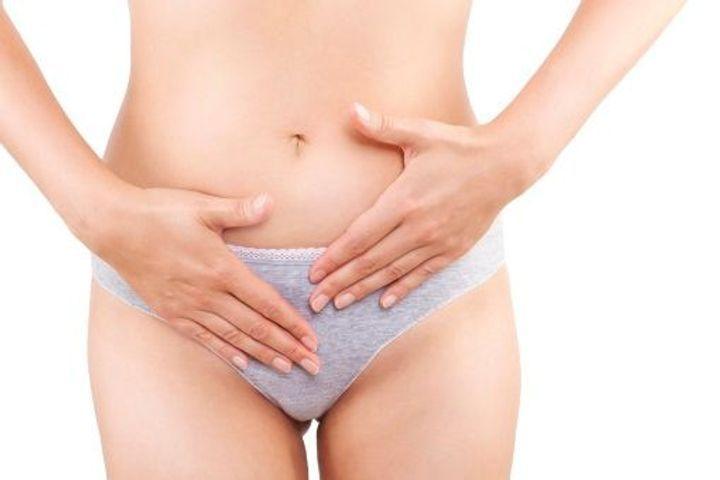
ADENOMYOSIS AND INFERTILITY: Natural treatment
On 15/11/2019
The adenomyosis uterus is often defined as the internal endometriosis in the uterus. It corresponds to the infiltration of the cells of the endometrium (uterine lining) into the muscle of the uterine wall (myometrium), which results in the thickening of the myometrium. However, Dawasanté experts provide you with a natural treatment based on medicinal plants to permanently cure adenomyosis.

Adenomyosis can be diffuse or focal (one or a few foci within the myometrium), superficial or deep. Diffuse adenomyosis is the most common. Namely: there is a link between endometriosis and adenomyosis but a woman can have endometriosis without adenomyosis or have adenomyosis without endometriosis.
This uterine pathology can affect fertility.
To discover our natural remedy for adenomyosis, click here
We deliver all over the world.
For more information, you can contact our experts on +229 51374202 direct line or by WhatsApp at the same number.
HOW ADENOMYOSIS RELATES TO INFERTILE
Adenomyosis is the presence of ectopic endometrial mucosa in the uterine muscle. The clinical symptomatology of adenomyosis is dominated by menometrorrhagia with pelvic pain and infertility. The diagnosis of adenomyosis is accessible on ultrasound, it will be confirmed or confirmed by MRI. Adenomyosis can be isolated or associated with endometriosis. The role of adenomyosis in female infertility is starting to be well-defined (chronic inflammation with ovulation disorder, contractility abnormalities and difficulty of implantation). The therapeutic modalities are medical, surgical and may involve embolization of the uterine arteries.
Always for in-depth the relationship between adenomyosis and infertility :
- Ballester et al. evaluated the cumulative rate of pregnancy after surgical treatment of colorectal endometriosis (68.6%) and found, in women with adenomyosis a rate of 19% against 82.4% in women without adenomyosis (OR: 0.34 with a 95% CI % (0.12-0.99)).
- -Kunz et al. conducted in 2005 a study in 227 infertile women, 160 with endometriosis and 67 without. The prevalence of adenomyosis is 79% in women with endometriosis, rising to 90% in those with a fertile partner (mobility of type “a” sperm greater than 20%), a significant difference (p <0.01). This can be explained by an alteration in the uterine transport of sperm due to changes in the junction area.
- -Kissler et al. studied these disturbances in uterotubal transport in hysterosalpingography. There was a correlation with the increase in the junction area and a difference between focused and diffuse adenomyosis. In the group of women with diffuse adenomyosis, 10% bilateral and 15% contralateral transport was observed. In focused adenomyosis, the rates were 40% and 35%, respectively.
These results are therefore arguments for IVF management of women with adenomyosis. Adenomyosis is responsible for a 30% decrease in the chances of pregnancy in AMP as well as an increase in the rate of spontaneous miscarriages. In infertile women with adenomyosis, there is a decrease in the implantation rate. In the case of gastrointestinal endometriosis surgery, the impact of adenomyosis is even greater, as mentioned above. Indeed, a review of the literature evaluating pregnancy rates after surgery for digestive endometriosis, reports a 68% reduction in the chances of pregnancy in adenomyosis. However, it seems that adenomyosis has an impact on embryo implantation rather than fertilization. However, these data should be qualified with the prospective study by Benaglia, published in 2014, which showed that asymptomatic adenomyosis did not affect the rates of implantation and pregnancy in IVF.
One of the most important parameters for implantation is the junction zone, the thickness of which increases between 20 and 50 years and decreases under treatment with GnRH agonists.
Protocols using a GnRH antagonist have a negative effect on the pregnancy rate. On the other hand, there is no significant difference in IVF / ICSI, between patients with or without adenomyosis, in the event of long protocols (more than 3 months) using a GnRH agonist. Preliminary series argues for a beneficial effect of GnRH analogues, prescribed for a period of 2 to 6 months, on the chances of pregnancy
The adenomyosis is responsible for pathophysiological disturbances decreasing the chances of pregnancy ; however, its effect during IVF / ICSI management is attenuated by the prescription of long protocols with GnRH agonists. There is also an increase in spontaneous miscarriages, probably related to a particular myometrial activity, according to some authors. From a therapeutic point of view, the medical treatment is disappointing (except the agonists ) and the surgical treatment must be reserved for the localized forms ( adenomyosis ). Therefore, the support in AMP should be preferred in cases of adenomyosis but remains complex. In the coming years, the SPRMs (currently under study) could provide satisfaction.
However, the high suspicion of its relation to endometriosis, a much more well-known pathology and having a close relation to infertility, has caused us to think for a long time in possible relation with the difficulty to get pregnant, and also suggested a link with worse outcomes after assisted reproduction treatment.
Currently, in view of the effects that adenomyosis produces on the uterus, it has been verified that there is a high discrepancy between what we observe and what the patient feels. That is to say that it is possible that we are in the presence of a uterus very affected or even deformed by adenomyosis and that this does not cause any symptoms in the patient or, on the contrary, that we observe slight clues and that we were dealing with a patient with severe symptoms. A uterus that is capable of producing very severe symptomatology could equally present difficulty in permitting embryonic implantation and therefore cause infertility which is difficult to resolve via infertility treatment.
Its relationship to repeated embryonic implantation defects has been suggested in much research, but cannot be confirmed due to inconsistency in diagnosing adenomyosis. What is clear is that in a patient with an implantation defect (more than 4 embryos transferred of good quality without obtaining pregnancy) the diagnosis of adenomyosis is of particular interest since a targeted and specific treatment of this pathology could improve the results of reproductive treatment.
To discover our natural remedy for adenomyosis, click here
We deliver all over the world.
For more information, you can contact our experts on +229 51374202 direct line or by WhatsApp at the same number.
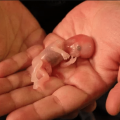
Uterine adenomyosis: symptoms and natural treatment
On 15/11/2019
If you suffer from a very heavy and painful period, you could suffer from adenomyosis: find out what are the causes and symptoms of this pathology.
Uterine adenomyosis is a disease that occurs with swelling inside the walls of the uterus. The woman, therefore, experiences severe pain, bleeding and colic, in addition to other symptoms that we will see later.
This disease occurs when the tissue that usually lines the uterus (endometrial tissue) grows into the muscle wall of the uterus. The excess tissue continues to function normally, swells, deteriorates and causes bleeding during the menstrual cycle.
Adenomyosis is a mild disease, common in women who give birth between the ages of 35 and 50. This disease can present in two ways, depending on the amount of damaged tissue:
- Diffuse adenomyosis: in this case, the uterus is partially or totally involved.
- Focal adenomyosis: also known as an adenomyoma. It is an isolated mass, placed inside the myometrial.
How to get pregnant despite adenomyosis?
If you have adenomyosis and want to get pregnant and skip the operation, you've come to the right place. Here is a very effective natural remedy to cure adenomyosis permanently. It is specially designed for patients who do not feel like having surgery, who want to get pregnant and have a normal pregnancy. This natural herbal treatment for adenomyosis will remove the pain you feel during your period and allow you to have normal cycles. It outperforms conventional treatments that relieve pain, but don't get to the root of the pain. How does it work?
Our herbal tea contains plants that reduce estrogen levels in the blood. This helps block the proliferation and bleeding of adenomyosis lesions. These herbal remedies are rich in antioxidants that inhibit enzymes that lead to pro-inflammatory prostaglandins. These are nutrients in high doses anti-inflammatory. This will definitely put an end to the pain you feel during your period. We know that many of you have had adenomyosis treatment or surgery, but the pain returned years later. No panic ladies! With us, no recurrence, no side effects. You will be permanently cured of adenomyosis.
To discover our remedy for adenomyosis, CLICK HERE
We deliver all over the world.
For more information, you can contact our experts on +229 51374202 direct line or by WhatsApp at the same number.
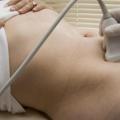
NABOTH CYST AND INFERTILITY: Natural treatment
On 15/11/2019
NABOTH'S CYSTS FOR INFERTILITY
The Naboth cysts are tiny cysts that form on the surface of your cervix. Your cervix connects your vagina to your uterus. It is sometimes called the cervical canal. Naboth's cysts are filled with mucus which is secreted by the cervical glands. Sometimes the small bumps are called cervical cysts, mucinous retention cysts, or epithelial cysts. Naboth's cysts are quite common. They do not pose a threat to your health and are not a sign of cervical cancer.
If you are looking for a natural treatment to fight Naboth cysts, the experts at Dawasanté have the solution for you. Click on the image below to discover this natural treatment.
We deliver all over the world.
For more information, you can contact our experts on +229 51374202 direct line or by WhatsApp at the same number.
NATURAL TREATMENT
The natural treatment that we offer to cure Naboth cysts is essentially made from natural herbal teas. Herbal tea is made up of plants whose active ingredients are able to suppress the symptoms that you feel and allow you to have a total recovery. This is the solution to find a normal life.
To discover our natural remedy to cure Naboth cysts, click here
The causes
The cervix is the tissue that connects the uterus to the vagina. The cervix has two distinct parts lined up in two different types of cells:
- Glandular cells, which line the area of the cervix closest to the uterus
- · Squamous cells, which line the part of the cervix closest to the vagina
Glandular and squamous cells meet to form an area called the transformation zone. This area undergoes many changes over the course of a woman's life, especially during pregnancy and childbirth.
Cells in the transformation zone are constantly changing, making this zone very susceptible to abnormal cell growth.
A number of conditions can cause a lump on the cervix and are described in the following sections.
Cervical polyps
A cervical polyp is a bulb-shaped, non-cancerous growth that develops on the cervix. The appearance, size and color of polyps can vary widely. It is not known why cervical polyps develop, but some of the possible causes of these polyps can include:
- High estrogen levels
- Inflammation of the cervix
- Blocked blood vessels
In most cases, cervical polyps are benign, with only 1 in 1,000 being cancerous. The doctor can remove the cervical polyps in a simple procedure.
Pregnant women can develop small white bumps called Naboth's cysts. They can form when excess skin cells block the mucous glands lining the cervix. Women may not know they have a Nabothian cyst until their doctor finds one during a routine pregnancy check-up. Although Naboth's cysts usually don't cause symptoms, they can rupture and release a foul-smelling discharge or blood.
Cervical fibroids
Fibroids, or myomas, are non-cancerous tumors that usually grow in muscle tissue in the uterus. Although rare, fibroids can also grow in the cervix.
Fibroids can vary in size and some can grow large enough to cause weight gain and swelling of the lower abdomen. Fibroids are almost always benign. Cancerous fibroids are rare and occur in less than 1 in 1,000 cases.
Cervical cancer
A lump on the cervix may indicate cervical cancer. Early Stage Cervical Cancer May Not Cause Symptoms Reliable Source. Cervical cancer can affect one or both types of cells that line the cervix.
Symptoms
Naboth cysts can cause a variety of symptoms if any. They can cause the following symptoms:
- Heavy or painful periods
- Bleeding between periods
- Foul-smelling vaginal discharge
- Pressure or swelling of the lower abdomen
- Frequent need to urinate
- Pain in the lower back, pelvis or legs
- Pain during intercourse
To diagnose the underlying cause of a lump on the cervix, the doctor will collect the following information:
- Family history
- · medical background
- Current drugs
They may also perform a physical exam and other diagnostic tests:
· Ultrasound tests use sound waves to create images of structures inside the abdomen and pelvis.
· MRI scans use a strong magnetic field and radio waves to create detailed images of the tissues inside the body.
· Hysteroscopy can help diagnose conditions affecting the uterus. During the procedure, a healthcare professional will guide a thin tubular device called a hysteroscope through the vagina and uterus. The hysteroscope captures images inside the uterus and transmits them to a computer.
· Laparoscopy uses a camera attached to the end of a thin tube to examine female reproductive organs.
· Biopsies are small samples of tissue from the lining of the cervix. After removal, the doctor will send the sample to a laboratory for analysis. Biopsies can detect the presence of precancerous or cancerous cells.
Complications
Usually, fibroids do not cause serious complications. However, untreated fibroids can increase the risk of infertility and cause problems during pregnancy, such as:
- Placental ablation
- · premature delivery
- · miscarriage
Having fibroids does not increase the risk of developing cancerous fibroids. Naboth's cysts rarely cause serious complications and often go away without treatment.
However, large Naboth cysts can distort the shape of the cervix. These cysts may require excision or surgical removal.
Medical treatments
Benign growths, such as cervical polyps and Naboth's cysts, often do not require treatment.
However, even benign growths can cause problems. Cysts and polyps can grow large enough to distort the shape of the cervix and may require surgical removal or drainage.
Treatment options for bumps on the cervix may include:
Surgery
Here are examples of surgical treatments for bumps on the cervix:
· Polypectomy: this method is to remove a polyp of the cervix with forceps or a string. This procedure usually takes place in an outpatient clinic.
· Electro-coagulation ablation: This method uses the heat of an electric current to remove a cervical cyst.
· Myomectomy: During this procedure, a surgeon will remove the fibroids through a small incision in the lower abdomen.
Medication
Gonadotropin-releasing drugs (GnRH) agonists and antagonists can treat symptomatic cervical fibroids.
GnRH drugs cause the body to make less estrogen and progesterone, which effectively reduces the size of fibroids without harming fertility.
Taking over-the-counter pain relievers, such as ibuprofen and acetaminophen, may help reduce cramps and lower back pain associated with the cervical lump.
Risk factors
It is not known exactly what causes the bumps on the cervix. However, there are certain factors that can increase the risk of developing a lump on the cervix.
Risk factors for cervical lumps include:
- Taking birth control pills containing estrogen
- Having a family history of fibroids, polyps, cysts or cervical cancer
- Inflammation of the cervix due to infections such as HPV, herpes, or yeast infections
- Be overweight or obese
- Having a weakened immune system
Prevention
Maintaining a healthy weight and controlling hormone levels can help reduce the risk of developing a lump on the cervix.
However, leading a healthy lifestyle does not guarantee complete protection against conditions that can cause a lump on the cervix. Participating in routine pelvic exams and Pap smears can help detect cervical abnormalities at an early stage.
The widespread use of regular Pap smears over the past decades has resulted in a significant reduction in the rates of cervical cancer deaths and diagnoses.
We deliver all over the world.
For more information, you can contact our experts on +229 51374202 direct line or by WhatsApp at the same number.






